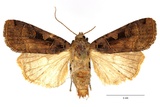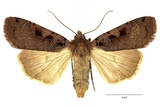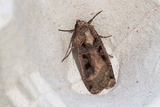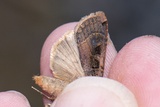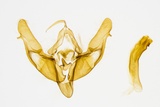Xestia ditrapezium (Denis & Schiffermüller, 1775) Species
Last modified: May 7, 2024, 11:06 a.m.
A rather rare species in the southern part of Belgium, in the northern part recorded as vagrants.
This species is considered Regionally Extinct according to the IUCN Red List category for Flanders 2023.
Details
- Classification
- Family: Noctuidae > Subfamily: Noctuinae > Tribus: Noctuini > Genus: Xestia > Subgenus: Megasema > Species: Xestia ditrapezium
- Vernacular names
- Trapeziumuil (NL), Triple-spotted Clay (EN), Le Double Trapèze, la Sérieuse (FR), Trapez-Bodeneule (DE)
- First mention in Belgium
- Lambillion L.-J. 1904d. Lépidoptères nouveaux pour la faune belge. — Revue mensuelle de la Société entomologique namuroise 4: 47. On page 47.
- Status
-
Native
Distribution
Bionomics
The larva feeds at night and hides during the day close to the ground.
Hibernates as a larva and pupates in the ground.
The adults come to light and sugar.
No pictures yet!
Flight periods
The adults fly in one generation a year from early June till late August.
Observed on
- Substrates:
- Herbaceous plants, Deciduous trees and Shrubs
The larva lives on different species of herbaceous plants like Primula and in spring also shrubs and trees as Salix, Betula or Cornus sanguinea.
No pictures yet!
